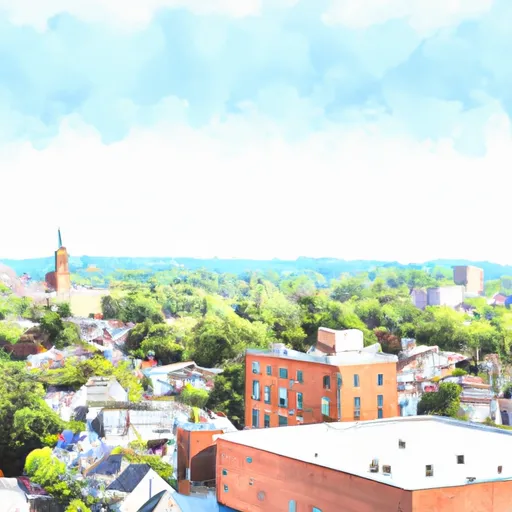-
 Snoflo Premium
Snoflo Premium
Get unlimited access to all our content
With no Ad interruptions! - Start Your Free Trial Login with existing account
Westwood
Eden Index
Climate
9.1
•
Recreation
5.0
•
Community
6.6
•
Safeguard
7.0/10

Westwood, Massachusetts is a charming town located in Norfolk County, just 12 miles southwest of downtown Boston. The climate in Westwood is classified as humid continental, characterized by warm summers and cold winters. Average temperatures range from the high 70s°F (25°C) in summer to the mid-30s°F (1-2°C) in winter, with moderate precipitation throughout the year.
Hydrologically, the town is situated near the Neponset River watershed, which provides a scenic landscape and recreational opportunities. Outdoor enthusiasts can explore the picturesque Hale Reservation, a 1,137-acre conservation area that offers hiking trails, fishing spots, and picnic areas. Additionally, the nearby Cutler Park Reservation is a great place for bird-watching, kayaking, and canoeing, as it encompasses diverse wetland habitats.
Westwood residents and visitors can also enjoy outdoor activities at Buckmaster Pond, which offers fishing, ice skating, and a beautiful walking trail. Moreover, Hale Reservation provides various recreational programs such as summer camps, outdoor education, and team-building activities.
In summary, Westwood, Massachusetts presents a pleasant climate, proximity to hydrological features, and ample outdoor recreational opportunities, making it an ideal destination for nature enthusiasts and those seeking a tranquil and picturesque environment.
What is the Eden Index?
The Snoflo Eden Index serves as a comprehensive rating system for regions, evaluating their desirability through a holistic assessment of climate health, outdoor recreation opportunities, and natural disaster risk, acknowledging the profound impact of these factors on livability and well-being.
Climate Health Indicator (CHI): 9.1
Westwood receives approximately
1292mm of rain per year,
with humidity levels near 75%
and air temperatures averaging around
10°C.
Westwood has a plant hardyness factor of
6, meaning
plants and agriculture in this region thrive during a short period during spring and early summer. Most
plants will die off during the colder winter months.
By considering the ideal temperature range, reliable water supplies, clean air, and stable seasonal rain or snowpacks, the Climate Health Indicator (CHI) underscores the significance of a healthy climate as the foundation for quality living.
A healthy climate is paramount for ensuring a high quality of life and livability in a region, fostering both physical well-being and environmental harmony. This can be characterized by ideal temperatures, reliable access to water supplies, clean air, and consistent seasonal rain or snowpacks.
Weather Forecast
Streamflow Conditions
Massachusetts-Rhode Island Coastal
Area Rivers
Massachusetts-Rhode Island Coastal
Snowpack Depths
Massachusetts-Rhode Island Coastal
Reservoir Storage Capacity
Massachusetts-Rhode Island Coastal
Groundwater Levels
Recreational Opportunity Index (ROI): 5.0
The Recreational Opportunity Index (ROI) recognizes the value of outdoor recreational options, such as parks, hiking trails, camping sites, and fishing spots, while acknowledging that climate plays a pivotal role in ensuring the comfort and consistency of these experiences.
Access to outdoor recreational opportunities, encompassing activities such as parks, hiking, camping, and fishing, is crucial for overall well-being, and the climate plays a pivotal role in enabling and enhancing these experiences, ensuring that individuals can engage in nature-based activities comfortably and consistently.
Nearby Ski Areas
Catastrophe Safeguard Index (CSI):
The Catastrophe Safeguard Index (CSI) recognizes that natural disaster risk, encompassing floods, fires, hurricanes, and tornadoes, can drastically affect safety and the overall appeal of an area.
The level of natural disaster risk in a region significantly affects safety and the overall livability, with climate change amplifying these risks by potentially increasing the frequency and intensity of events like floods, fires, hurricanes, and tornadoes, thereby posing substantial challenges to community resilience and well-being.
Community Resilience Indicator (CRI): 6.6
The Community Resilience Indicator (CRI) recognizes that education, healthcare, and socioeconomics are crucial to the well-being of a region. The CRI acknowledges the profound impact of these elements on residents' overall quality of life. By evaluating educational resources, healthcare accessibility, and economic inclusivity, the index captures the essential aspects that contribute to a thriving community, fostering resident satisfaction, equity, and social cohesion.

